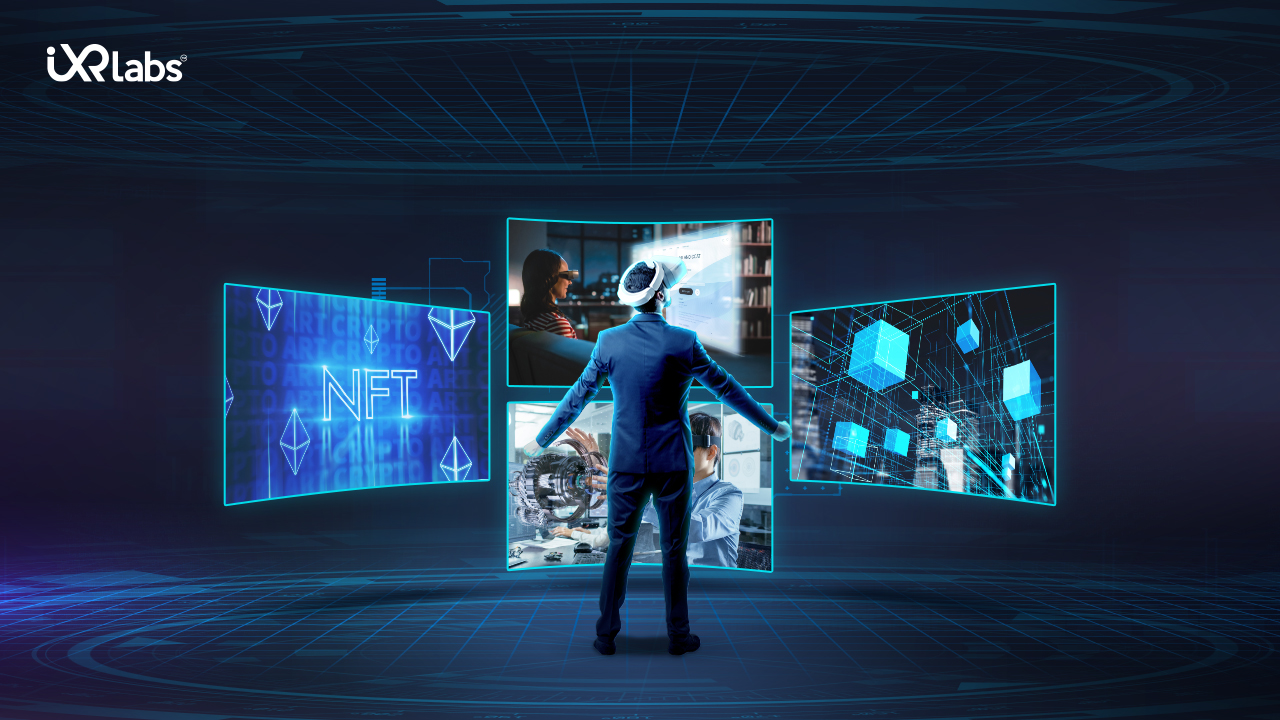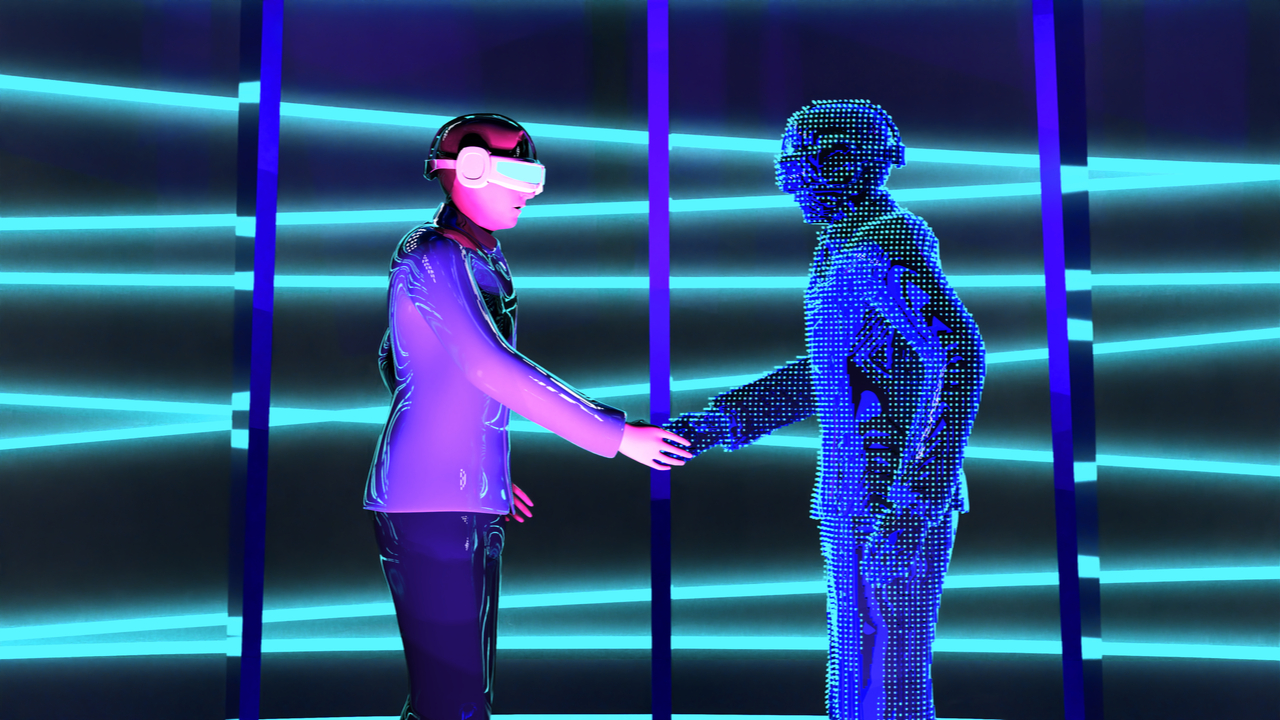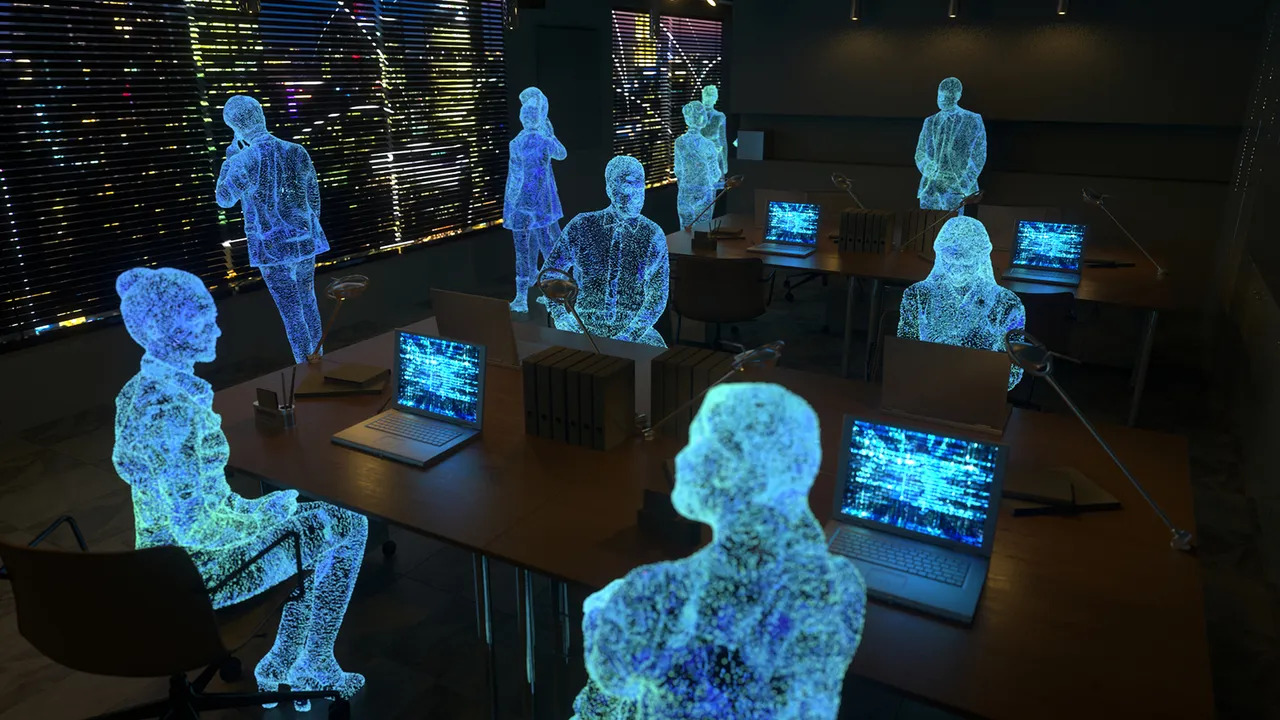Metaverse Applications In The Real World | Embracing its Applications & Overcoming Challenges

In recent times, the Metaverse has emerged as a captivating
concept, captivating the imagination and curiosity of people from all walks of
life. Its potential to create a fully immersive, interconnected digital
universe where boundaries fade away has ignited excitement across industries
and communities.
But is the Metaverse a mere myth or an inevitable reality?
In this blog, we will delve into the current state of the Metaverse including the Metaverse real-world applications, and explore its transformative potential for our future along with its challenges. Let’s begin.
Defining Metaverse
"The Metaverse beckons us, offering a digital oasis where the only limits are the ones we dare to imagine."
Neal Stephenson's iconic novel "Snow Crash"
propelled the term "Metaverse" into
popular culture, describing a virtual reality space where individuals can
interact seamlessly with computer-generated environments and other users.
Rather than isolated virtual worlds or augmented reality experiences, the
Metaverse envisions a sprawling network of interconnected realms that blur the
boundaries between the physical and virtual worlds.
What is the Current State of Metaverse?
While we may not have achieved a fully realized Metaverse
yet, progress towards its creation is undeniably underway.
Major technology companies and startups are pouring
substantial investments into virtual reality (VR), augmented reality (AR),
and extended reality (XR) technologies, laying the groundwork for this grand
vision. Moreover, advancements in blockchain technology and decentralized
networks are opening doors to secure and scalable digital economies within this
virtual realm.
Real-World Applications of Metaverse

"The Metaverse, a gateway to infinite realms,
intertwines with our physical existence, offering a tapestry of opportunities
where industries thrive, knowledge flourishes, and experiences transcend the
ordinary."
The Metaverse's potential extends far beyond the realm
of entertainment, transcending the borders of gaming. Imagine attending virtual
conferences, collaborating with colleagues in immersive workspaces, or even
embarking on virtual tourism adventures. Such interactive experiences made
possible by the Metaverse have the power to transform industries like
education, healthcare, architecture, and more, enabling us to explore uncharted
frontiers of possibility. Let's explore some compelling examples of how the
Metaverse can revolutionize various aspects of our lives:
Education Reimagined
Imagine attending virtual classrooms where students
from around the world come together, transcending geographical boundaries.
Through immersive experiences, interactive simulations, and virtual field
trips, the Metaverse can provide students with engaging and personalized
learning opportunities.
It enables educators to create dynamic and interactive
educational content, fostering a deeper understanding and enhancing the
educational experience. Furthermore, the Metaverse can bridge gaps in access to
quality education, making learning accessible to individuals in remote areas or
those facing physical limitations.
Also read: VR Education: Top 10 Reasons to Include VR in Higher Education
Healthcare Revolution
Within the Metaverse, healthcare
can be revolutionized by creating virtual environments for medical training,
simulations, and even remote surgeries. Healthcare professionals can
collaborate in virtual workspaces to exchange knowledge, consult on complex
cases, and enhance patient care. Telemedicine can be taken to new heights,
enabling doctors to provide remote consultations and diagnoses in virtual
settings.
Additionally, virtual reality therapies
can be utilized for pain management, rehabilitation, and mental health
treatments, providing immersive and personalized healing experiences.
Architectural and Design Innovation
The Metaverse offers architects and designers a
transformative platform to visualize and showcase their creations. Virtual environments
can be utilized to construct and explore architectural designs, enabling
stakeholders to experience spaces before they are built. Clients can walk
through virtual representations of their future homes or buildings, making
informed decisions and providing valuable feedback.
Furthermore, the Metaverse allows for collaborative
design processes, where architects and designers from different locations can
collaborate seamlessly, fostering creativity and pushing the boundaries of
architectural innovation.
Cultural Preservation and Tourism
Metaverse can serve as a digital repository of
cultural heritage, preserving historical sites, artifacts, and traditions for
future generations. Virtual tourism experiences can transport individuals to
iconic landmarks and remote destinations, allowing them to explore the world from
the comfort of their homes.
Through immersive storytelling, interactive
exhibits, and virtual guided tours, the Metaverse can unlock the wonders of our
shared cultural heritage, promoting cultural understanding and inclusivity.
As the Metaverse evolves, its impact on industries
such as entertainment, social networking, e-commerce, and more will continue to
expand. Embracing its potential, these real-world applications demonstrate how
the Metaverse can transcend boundaries, empower individuals, and reshape the
way we live, work, and experience the world around us.
Also read: Why are Artificial Intelligence and Virtual Reality the Perfect XR Pair?
Metaverse: Challenges and Considerations

"The Metaverse's journey is not a solitary
expedition, but a collective endeavor that embraces challenges as
opportunities, unlocking a realm of infinite potential where innovation flourishes,
and human connection thrives."
Yet, the realization of the Metaverse does not come
without its fair share of challenges. Technical hurdles such as hardware
limitations and network infrastructure must be overcome, alongside the need for
standardization. It is crucial to safeguard privacy, security, and ethical
guidelines within this digital realm. Striking a delicate balance between open
collaboration and maintaining individual autonomy becomes paramount for the
Metaverse's success.
Technical Hurdles on the Horizon
Achieving the full realization of the Metaverse
comes with a set of technical obstacles that must be addressed. For instance,
the current limitations in hardware capabilities pose challenges in creating
truly immersive and realistic virtual experiences. However, advancements in
technology continue to bridge this gap.
The recent release of next-generation virtual reality
headsets, such as the Oculus Quest 3, showcases significant progress in
delivering high-quality visuals and immersive interactions, bringing us closer
to the Metaverse's potential.
Network Infrastructure and Scalability
Building a robust network infrastructure capable of
supporting the vast scale and interconnectedness of the Metaverse is a critical
challenge. The seamless integration of virtual realms and real-time
interactions necessitates a reliable and high-speed network. As an example, the
deployment of 5G technology holds promise in providing the necessary bandwidth
and low latency required for smooth Metaverse experiences.
The ongoing global efforts to expand 5G networks
indicate the increasing recognition of its importance in realizing the
Metaverse's potential.
Standardization and Interoperability
In order for the Metaverse to
truly thrive, standardization and interoperability across various platforms and
technologies are crucial. Without common protocols and frameworks, different
virtual environments may become isolated, hindering the seamless flow of
experiences and interactions.
Promising initiatives, such as
the Open Metaverse Interoperability Group (OMG), aim to establish industry
standards and enable users to navigate seamlessly between different virtual
worlds and experiences. This cooperative approach is vital in ensuring a
cohesive and inclusive Metaverse.
Privacy, Security, and Ethical Considerations
As the boundaries between the physical and digital
worlds blur within the Metaverse, ensuring privacy, security, and ethical
guidelines becomes paramount. Striking a balance between user autonomy and
protecting personal data requires careful consideration. The development of
decentralized identity solutions, such as self-sovereign identity (SSI) on
blockchain networks, offers potential avenues for users to maintain control
over their data while participating in the Metaverse.
Additionally, robust security measures and
transparent governance frameworks are necessary to mitigate risks associated
with virtual environments, preventing unauthorized access or malicious
activities.
Inclusivity and Accessibility
The Metaverse must be inclusive and accessible to
people of diverse backgrounds and abilities. It should not perpetuate existing
inequalities but instead strive to bridge the digital divide. Addressing
accessibility challenges, such as providing support for individuals with
disabilities or ensuring compatibility with different devices, is
crucial.
For instance, initiatives like the Virtual World
Consortium are actively working to promote accessibility standards and
guidelines within virtual environments, enabling a more inclusive Metaverse
experience for all.
As we navigate these challenges, it is important to
remember that overcoming them requires collaboration, innovation, and
continuous adaptation. By recognizing and addressing these real-life obstacles,
we can ensure that the Metaverse evolves into a dynamic and equitable digital
landscape, fostering a future where individuals can freely explore, create, and
connect within a boundless realm of possibilities.
Also
read: Why Haptic Feedback is Crucial for VR
Education?
The Road Ahead

"The Metaverse's path lies not in solitude but in unity, where diverse minds converge to illuminate a brighter future, where the digital and physical coalesce."
To propel forward, fostering interdisciplinary collaboration becomes a necessity, bringing together technology experts, policymakers, ethicists, and creatives. Joint efforts between the public and private sectors are essential to establish robust standards, regulations, and governance frameworks. By protecting user interests and fostering innovation, we can collectively shape the Metaverse's future as a canvas upon which humanity can paint a digitally connected and inclusive tapestry.
Conclusion
From the realms of science fiction to our present reality, the Metaverse's emergence signals a transformative shift in how we live, work, and interact. While challenges remain, the combined forces of technology pioneers, visionaries, and diverse stakeholders hold the key to unlocking the full potential of the Metaverse. As we embark on this exciting journey together, the question is not whether the Metaverse will exist but rather how we will shape it to benefit humanity, fostering a connected, inclusive, and limitless.
Visit our website and read more insightful blogs




